Be Your Own Coach
Course Length: ½, 1, or 2 days
This course will teach you how to recognize opportunities for personal and professional growth, define commitments to yourself and keep them, develop greater self-confidence and self-awareness, and understand the power of your feelings, moods, and reactions. It is possible for you to develop your own approach to learning and excel without the benefit of a formal coach. By developing self-coaching skills, you will empower yourself by creating new possibilities for growth for yourself and your organization.
Introduction
Part 1: Openings for Coaching
Part 2: In the Middle of This Road You Call Your Life
Part 3: The Coach’s Toolbox
Part 4: Supporting Yourself in the Coaching Process
.
.
.
.
.
.
.
.
.
.
Coaching and Counseling
Course Length: ½, 1, or 2 days
Fine-tune your skills as a motivating manager, supervisor, or adviser with this proven course. Learn the differences between counseling and coaching–and when to apply each technique for the best results. Student exercises will help you identify your weaker coaching and counseling skills and build upon your stronger ones.
Part 1: Coaching and Counseling
Part 2: When to Coach or Counsel
Part 3: Giving and Receiving Feedback
Part 4: Plan and Conduct Coaching and Counseling Sessions
Part 5: Appendix
.
.
.
.
.
.
.
.
.
.
Coaching and Mentoring
Course Length: ½, 1, or 2 days
This workshop focuses on how to better coach your employees to higher performance. Coaching is a process of relationship building and setting goals. How well you coach is relates directly to how well you are able to foster a great working relationship with your employees through understanding them and strategic goal setting.
An easy-to-understand coaching model taught in this workshop will guide you through the coaching process. Prepare yourself to change a few things about yourself in order to coach your employees to better performance.
Module One: Getting Started
Module Two: Defining Coaching and Mentoring
Module Three: Setting Goals
Module Four: Understanding the Realities
Module Five: Developing Options
Module Six: Wrapping it All Up
Module Seven: The Importance of Trust
Module Eight: Providing Feedback
Module Nine: Overcoming Roadblocks
Module Ten: Reaching the End
Module Eleven: How Mentoring Differs from Coaching
Module Twelve: Wrapping it Up
.
.
.
.
.
.
Coaching for Development
Course Length: ½, 1, or 2 days
Upon finishing this course, you will have the skills to find out how to assess coaching needs, discover the six tools essential to coaching success, understand the roles of a coach, and learn how to supply the right advice and support. Today’s business environment is requiring managers to act more as coaches than “bosses.” They must motivate and lead, as well as become facilitators who empower through a common vision. Through effective coaching, managers can improve performance, personal growth, and increased job satisfaction for their employees and themselves.
Section 1: The New Role of Manager as Coach
Section 2: Coaching for Development
Section 3: The Roles of a Coach
Section 4: Tools for Coaches
.
.
.
.
.
.
.
.
.
.
Making the Most of Being Mentored
Course Length: ½, 1, or 2 days
This course will teach you how to create a strong mentor/mentee relationship, and how to grow from that partnership. You will learn what mentors can offer you, ten reasons to become a mentee, how mentoring can help you manage your self-development, and how to pick a mentor. Mentoring programs have become prominent in many organizations, especially in today’s highly technical environment. Developing a strong mentor relationship is beneficial to the mentor, the mentee, and the organization. Some of the many benefits of being mentored are self and career development, new perspective and insights into organizational culture, and performance improvement and talent development.
Part 1: Mentor/Mentee: A Special Relationship
Part 2: The Proactive Mentee
Part 3: Seven Special Mentee Skills
Part 4: Building a Productive Relationship
Part 5: Maximizing Results
Part 6: Summary

